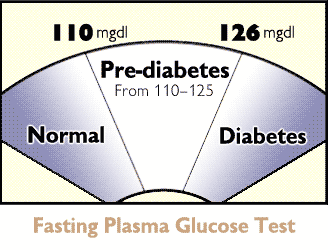
Diabetes mellitus is a disease in which levels of glucose (simple sugar) in the blood was high because the body can not releases or use insulin required to stabilizing the sugar blood level.
On Diabetic patient, the pancreas no longer produces enough insulin or when cells stop responding to the insulin that is produced, so that glucose in the blood cannot be absorbed into the cells of the body.
Insulin is a hormone released by the pancreas, which is responsible for maintaining blood sugar levels to normal. An Insulin put sugar into the cells that can produce energy or stored as energy reserves.
If Diabetes Mellitus become chronic disease, it also can causes another serious health complications including renal (kidney) failure, heart disease, stroke, and blindness.
Well, how much is blood sugar levels that can called as high? According to the diagnostic criteria PERKENI (Society of Endocrinology Indonesia) in 2006, someone said to have diabetes if you have a fasting blood sugar higher than 126 mg/dL and when tested reach as much as or higher than 200 mg / dL.
Blood sugar levels vary throughout the day which will increase after the meal and returned to normal within 2 hours. The normal Blood Sugar Levels in the morning after the night before fasting is 70-110 mg/dL of blood. Blood sugar levels are usually less than 120-140 mg/dL at 2 hours after eating or drinking liquids that contain sugars or other carbohydrates.
Blood sugar levels tend to increase in normal mild but progressive (gradually) after the age of 50 years, especially to people who do not actively move. Increased blood sugar levels after eating or drinking stimulates the pancreas to produce insulin which keeps blood sugar levels rise further and cause blood sugar levels slowly decreased.
There are other ways to lower blood sugar levels, such as to perform physical activity and exercises, because the muscles use glucose in the blood for used to be energy.
At the same time that the body is trying to get rid of glucose from the blood, the cells are starving for glucose and sending signals to the body to eat more food, thus making patients extremely hungry. To provide energy for the starving cells, the body also tries to convert fats and proteins to glucose.
The breakdown of fats and proteins for energy causes acid compounds called ketones to form in the blood. Ketones will also be excreted in the urine. As ketones build up in the blood, a condition called ketoacidosis can occur. This condition can be life threatening if left untreated, leading to coma and death.





 Older Post
Older Post






